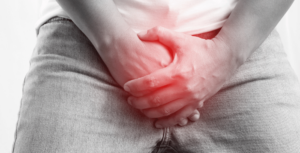What is bacterial vaginosis?
Bacterial vaginosis (BV) is a common condition that affects women of reproductive age. It is caused by an overgrowth of bacteria in the vagina, resulting in an imbalance of the natural bacterial flora. BV is not a sexually transmitted infection. In this article, we will discuss the symptoms, causes, and treatment of bacterial vaginosis.
Symptoms
The symptoms of BV can vary from woman to woman. Some women may not experience any symptoms at all, while others may experience the following:
- A thin, white or grey vaginal discharge
- A strong, fishy odour, especially after sexual intercourse
- Burning or itching around the vagina
- Pain during urination
- Vaginal irritation or redness
Causes
The exact cause of BV is not known, but it is believed to be related to an imbalance in the vaginal microbiome. The vagina normally contains a balance of different types of bacteria, including lactobacilli, which help to keep the pH of the vagina acidic and prevent the overgrowth of harmful bacteria. When the balance of bacteria is disrupted, harmful bacteria can overgrow and cause BV.
There are several factors that can increase the risk of developing BV, including:
- Douching: Douching can disrupt the natural balance of bacteria in the vagina and increase the risk of BV.
- Sexual activity: Women who are sexually active are more likely to develop BV, although the condition is not considered to be a sexually transmitted infection.
- Antibiotics: Taking antibiotics can disrupt the balance of bacteria in the vagina and increase the risk of BV.
- Hormonal changes: Hormonal changes during pregnancy or menopause can increase the risk of BV.
Treatment
The treatment for BV usually involves antibiotics, which can be taken orally or applied topically to the vagina. In addition to antibiotics, there are several steps that women can take to help prevent BV from recurring, including:
- Avoiding douching
- Using condoms during sexual activity
- Practicing good hygiene, including washing the genital area with mild soap and water
- Eating a healthy diet and avoiding excessive sugar and refined carbohydrates
- Take high-concentration probiotics and eat foods rich in probiotics, such as kefir
In conclusion, bacterial vaginosis is a common condition that affects many women. The symptoms of BV can vary from woman to woman, but treatment typically involves antibiotics and lifestyle modifications. If you are experiencing symptoms of bacterial vaginosis (BV), it is essential to consult a healthcare provider for a diagnosis and treatment. Contact us today to speak with our professional team.
















